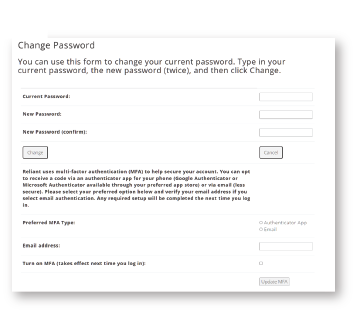Maintaining your financial health can sometimes feel overwhelming, but fortunately, there are personal financial management tools that can help you organize, regulate and monitor your bills, finances, and credit.
Staying financially smart is essential, and requires clear financial goals and a roadmap to achieve these benchmarks, now, and in the future. Luckily, personal financial planning tools have come a long way. It is now easier more than ever to efficiently manage your finances online and expand your financial portfolio, with a myriad of free to low-cost options.
Here are some popular tools used in financial management, including our top picks for budget planning, payment tracking, and more.
Calendar Tools for Tracking Bills and Payments
Managing multiple bills every month can prove quite the juggling act, especially when different bills are due on different days. Credit card payments, loans, rent, utilities, and various other subscriptions are only a few in the full list of bills that many of us pay each month.
Calendar tools offer a single-platform solution to bills and payments tracking, allowing users to know what’s due, and when. These tools can help you avoid unwanted late-charges, debt accumulation, and other damaging financial consequences that will directly affect your financial success. When combining these calendar tools with an automatic payment system, you can build a powerful, centralized dashboard to help you visualize your bucket of bills.
Explore these easy-to-use and consumer-friendly bill tracking platforms:
- BudgetMe – BudgetMe makes tracking your bills and making on-time payments easier than ever. Through its “At-A-Glance” feature, BudgetMe allows you to quickly track all your upcoming bills in real-time while also giving you the ability to turn on auto-pay at the touch of a button. Its one-of-a-kind Intelligent Balance (IB) feature will track all your bills, place them in order of priority, and alert you of insufficient funds prior to due dates.
- Prism – Prism boats itself as “magic for your bills.” Operating as a consolidated dashboard, Prism makes it easy to track and make payments to over 11,000 billers. Prism automatically pulls and organizes all upcoming bill payments in a calendar, sending frequent reminders for upcoming due dates, as well as notices once they’ve been paid. Never miss or make a late payment again. Prism is a free tool made available for mobile and desktop users. Visit your app store to begin installation.
- Truebill – Trubill inspires its customers to take control of their finances, allowing users to spend less, save more, and see everything from one concentrated platform. Powered by RocketMortgage, Truebill’s multifaceted approach to wealth management allows users to track spending, avoid overdraft fees, manage subscriptions, and learn crucial spending insights in efforts to instill healthier habits. While the Truebill app is free to use, additional features and services come at a cost. Learn more about the Truebill premium subscription, which includes customer chat options, custom budget categories, unlimited budgets, smart savings, and more.
If you’re not looking for a fully dedicated support platform, you can set up bill scheduling and alerts in a simple Google Calendar. While this solution will help keep everything organized, it can’t actually pay the bill, meaning this option is best left for individuals who prefer paying manually.
Budgeting Tools and Platforms
A budget is a monthly (sometimes yearly) plan for balancing income and expenses to achieve long-term financial goals. A crucial yet neglected step in mature financial management, failure to budget effectively creates room for faulty habits that can ultimately prevent one from reaching these goals.
Overall, budgeting helps put your spending into context. It’s also incredibly helpful when you’re trying to save money, avoid debt, or get out of debt. Many helpful tools exist to assist individuals in understanding their own wealth, how much they should be spending, and how much they should be saving. But, getting started can be a pain. As such, having a dedicated budgeting tool is an extremely valuable asset in maneuvering the more tedious aspects of budget creation.
Luckily, you’ve got your pick when it comes to budgeting apps, including fan-favorite platforms like Mint, EveryDollar, and Honeydue.
- BudgetMe – BudgetMe is one of the most unique financial tools on the market. In addition to its bill-tracking capabilities, the app also has two outstanding features that can assist in achieving your financial goals.
- Budget Tracking Intelligence gives you the power to understand and analyze your spending habits. Reach your financial goals by utilizing BudgetMe’s suggested spending and saving adjustments.
- P-Share gives parents who have adult-age kids the ability to manage the money you give them on their own dashboard. Learn more about all the excellent ways you can help your kids sharpen their financial management skills.
- Mint – Powered by intuit, Mint is money management made simple. An app that takes the frustration and pain out of personal finance, Mint offers a full-view approach to wealth management, including payment tracking, budgeting, and financial goal planning. Budget easily and more efficiently with Mint, and take advantage of its unique approach to consumer financial education. In addition to budget creation, Mint offers robust spending analyses and added counsel as it pertains to financial habits and money opportunities.
- EveryDollar – Budget confidently with EveryDollar, an easy-to-use and consumer-friendly management platform created to inform. EveryDollar’s personalization capabilities enable custom budget creation at no cost, savings management at no cost, and real-time bill tracking at no cost.
- Honeydue – Honeydue is a finance app made for couples, enabling easy money management for persons living with (and spending with) a partner. Even non-married couples conjoin their finances in one way or another, splitting spending on rent, groceries, mutual subscriptions, etc. To save more, establish clear cut financial lines, and plan for a financial future together, Honeydue provides an all-in-one collaborative system. Track accounts, coordinate bills, bank together, and keep private data safe all within the Honeydue app. The Honeydue app is free, though some services may come at an additional cost.
Because an app is only beneficial if you actually use it, we recommend playing around with a few different interfaces to see which platform best works for you and aligns with your specific situation.
Ready to Meet Your Money Goals?
Financial apps can be integral to accomplishing your money goals and efficiently managing your finances. They are also great tools for building better money management skills and establishing smarter strategies for remaining debt-free now and in the future. Check out the recommendations above to get started!
Reliant is an independent account management and payment processing company, helping consumers seamlessly process payments to creditors and debt resolution companies.
Information provided on Reliant’s blog is for educational purposes only. Your financial situation is unique and the products and services we review may not be right for your circumstances. We do not offer financial advice, advisory or brokerage services, nor do we recommend or advise individuals or to buy or sell particular stocks or securities. Performance information may have changed since the time of publication. Past performance is not indicative of future results. To the best of our knowledge, all content is accurate as of the date posted, though products or offers discussed in this post may no longer be available. The opinions expressed are the author’s alone and have not been provided, approved, or otherwise endorsed by Reliant or our partners.







